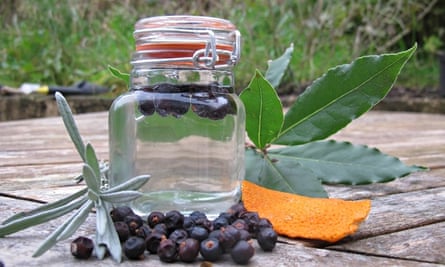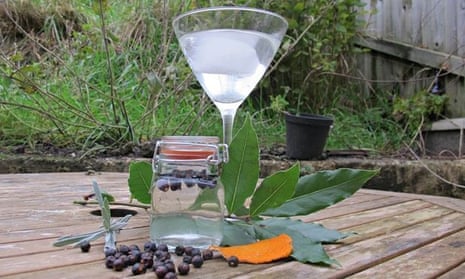Every time we throw a cocktail party, the same thing happens: all the gin gets drunk and we end up with extra bottles of vodka. It’s little wonder – gin is the most important cocktail base according to David Embury, the author of the seminal cocktail book, The Fine Art of Mixing Drinks (1948). Gin, he says, will “blend satisfactorily with all manner of other flavours”. To test his claim, you only need to flick through any modern cocktail book to see just how many gin-based cocktails there are. Many of the classics use it – the martini, Tom Collins, the negroni – not to mention the gin and tonic.
With cocktail sales booming, so are sales of gin. Bartenders are demanding new and exciting gins, and the market is responding. Craft gin producers and distilleries are popping up across the nation, from the small islands of Scotland right through to the tip of Cornwall, and charging a pretty penny for their wares.
But there’s no need to shell out. Making a “bathtub” gin at home is easy. You don’t need a distillery, just a cheap bottle of vodka, some choice ingredients, a mason jar and a couple of days. The beauty of making your own is that you can tailor the ingredients to match your favourite craft gin, which can cost at least £30 a bottle, for a fraction of the price. For example, add cucumber if you like Tanqueray, cassia bark if you like Sipsmith or seville oranges if Beefeater is your tipple.
The gin

750ml vodka (preferably 50% ABV)
2 tbsp juniper berries (more if you like juniper-forward gin)
¼ tsp fennel seeds
¼ tsp whole allspice
¾ tsp coriander seeds
4 cardamom pods
2 peppercorns
1 torn bay leaf
A small sprig of lavender
A larger sprig of rosemary
A small piece of dried grapefruit peel (no pith)
A small piece of dried lemon peel (no pith)
Plus:
Mason/kilner jar
Muslin/cheesecloth
Crush the juniper berries a little to help release the aromatics and place them inside your mason jar. Pour over the vodka and seal. Leave for 12 hours.
Taste your vodka; it should now be taking on the characteristics of gin. That strong juniper flavour should have infused nicely. If not, add more juniper berries and leave for a further 12 hours. The amount of flavour extraction depends on how fresh your juniper berries are. When you are happy with the level of juniper, remove the juniper.
Place the remaining botanicals into the mason jar. Top up with the juniper-infused vodka and leave for a further 36 hours.
Filter your gin back into the vodka bottle and re-label.
You may notice that the gin has gone the colour of bathtub gin, ie yellow. Don’t worry, this won’t affect the flavour – it is because it hasn’t been filtered as much as a normal gin.
The tonic
Whipping up a batch of tonic water is fairly easy. The hardest part is finding all the ingredients, but a trip to a herbalist or a quick online search should furnish you with all that you need.
1l water
500g sugar
Zest and juice of 2 limes
Zest and juice of 1 lemon
Zest and juice of 1 orange
28g cinchoa bark
28g citric acid
1-4 sticks of lemongrass
2-4 cardamom pods
10 allspice berries
Soda water
Plus:
Accurate small scales
Large saucepan
Wooden spoon
Funnel
Small sieve
Muslin/cheesecloth
A bottle or two
Put all the ingredients except the soda water into your pan and simmer gently for 20-25 minutes. Stir to ensure the sugar has fully dissolved.
Allow to cool, then strain the syrup into bottles. It will keep in the fridge for about a month.
When using, dilute at around 4:1 with soda water to make fizzy tonic water.
This recipe yields a one-litre bottle with a bit left over. The extra bit can be frozen as ice cubes and used in gin and soda water, making a gin and tonic that slowly becomes more tonic-y, and therefore more refreshing, as it warms.

Comments (…)
Sign in or create your Guardian account to join the discussion